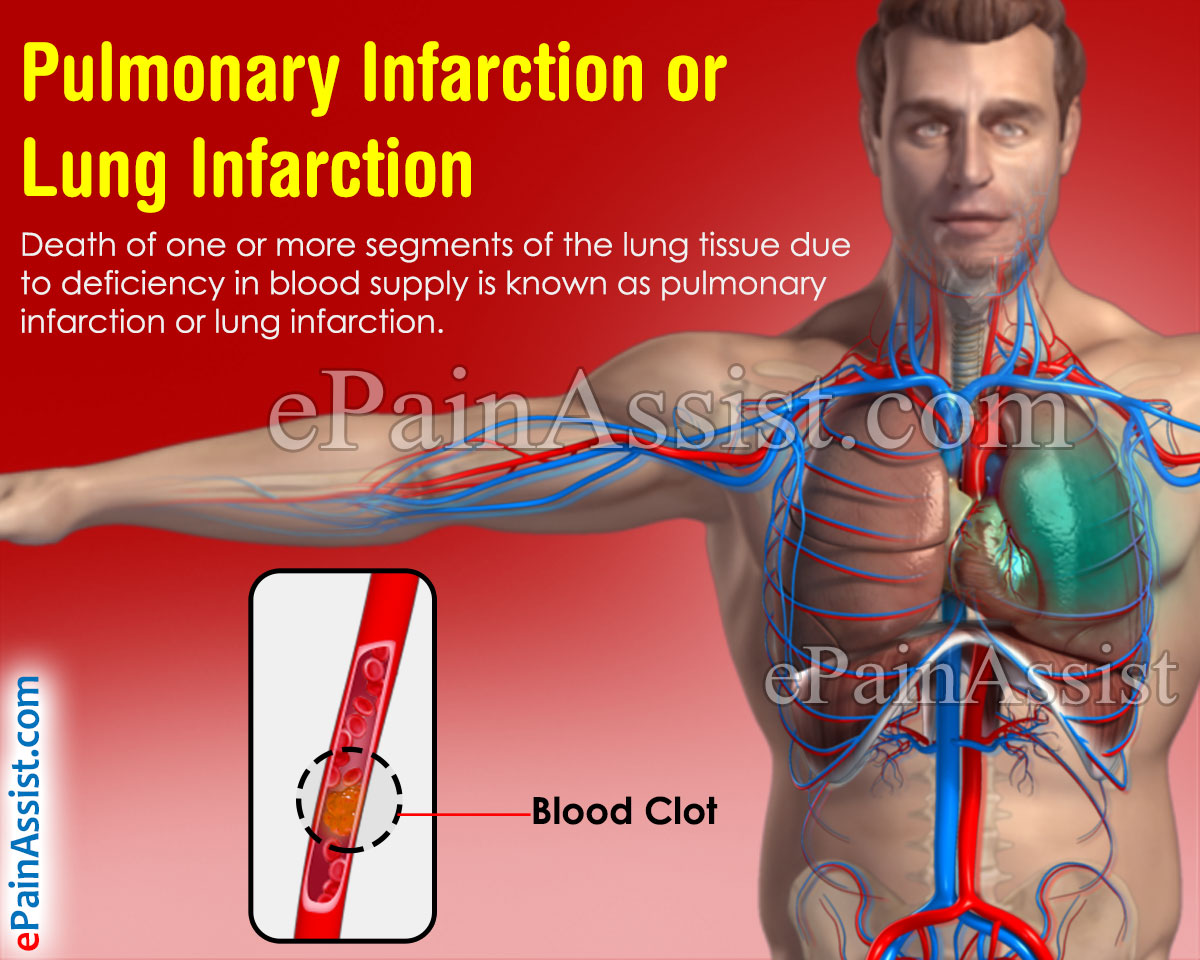What is Pulmonary Infarction or Lung Infarction?
Death of one or more segments of the lung tissue due to deficiency in blood supply is known as pulmonary infarction or lung infarction. The segment of tissue, which is dead is known as infarct. The cause of deficiency or decrease in blood flow is usually an obstruction in a blood vessel which serves the lung. The obstruction can be in a form of a blood clot or air bubbles in the bloodstream (embolism). The blockage could also be from a clot which has formed in the blood vessel itself and continues to remain at the site where it was formed. This type of clot is known as thrombus. Normally in healthy lungs, these blockages do not cause death of the tissue as the blood reaches its destination via alternative routes. If the lungs are not healthy, i.e. if they are infected, congested or has inadequate air supply, then lung infarctions can occur following the blockage of a blood vessel. Infarcts may take up to two to three weeks to heal where the dead tissue is replaced by scar tissue.
Causes of Pulmonary Infarction or Lung Infarction
Deficiency or decrease in blood flow due to obstruction in a blood vessel supplying lungs. The obstruction could be a blood clot, air bubbles in the bloodstream (embolism), clot which has formed in the blood vessel itself and continues to remain at the site where it was formed (thrombus). Normally in healthy lungs, these blockages do not cause death of the tissue as the blood reaches its destination via alternative routes. If the lungs are not healthy, i.e. if they are infected, congested or has inadequate air supply, then lung infarctions can occur following blockage of a blood vessel.

Signs and Symptoms of Pulmonary Infarction or Lung Infarction
- Acute pain in the chest which radiates to the shoulder.
- Blood in the sputum.
- Cough.
- Fever.
- Difficulty in breathing.
- Increased heartbeat (tachycardia).
- Pleural rubbing.
- Decreased breath sounds.
- Constant hiccups.
- Profuse sweating.
- Dull sound heard upon chest percussion.
- Sometimes the patient may go in a state of shock.
- The blood test reveals increased number of white blood cells and sedimentation rate.
Tests to Diagnose Pulmonary Infarction or Lung Infarction
- Arterial or capillary blood gas.
- D-dimer test.
- Blood tests which reveal an increased number of white blood cells and sedimentation rate.
- Chest x-ray.
- CT scan of the chest.
- CT pulmonary angiography.
- Ventilation/perfusion scan.
- MRI.
- Echocardiography.
Treatment for Pulmonary Infarction or Lung Infarction
Treatment comprises of providing initial cardiopulmonary support. Anticoagulants are given in order to prevent the clot from growing and should be started in those patients where there is no risk of active bleeding. Thrombolysis is done in pulmonary embolism (PE), if the embolus is large. Mechanical ventilation may be given to provide respiratory support and also to act as an adjunctive therapy if the circulatory system is failing. Transfusion with packed RBCs helps vastly in improving oxygenation. Surgery may be required in some cases and comprises of embolectomy and surgical placement of vena caval filters (Greenfield filters).
